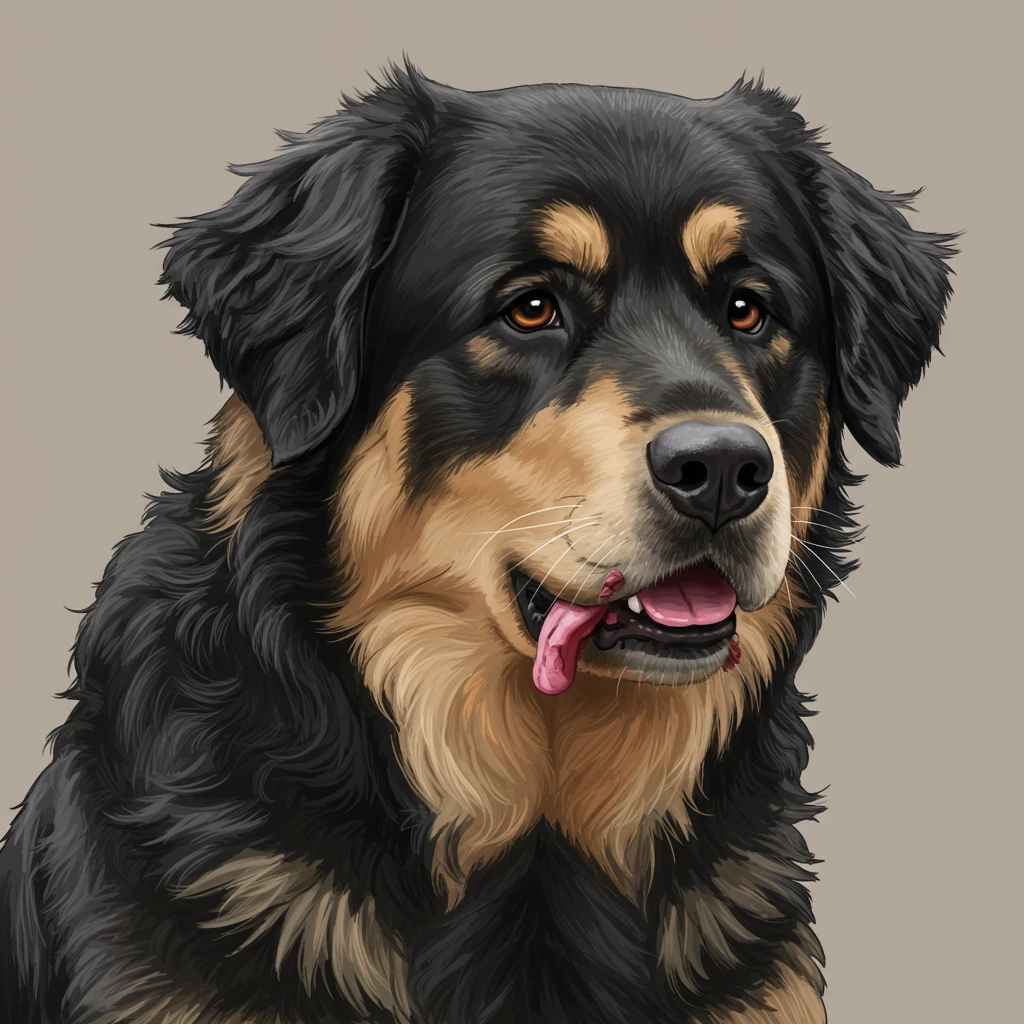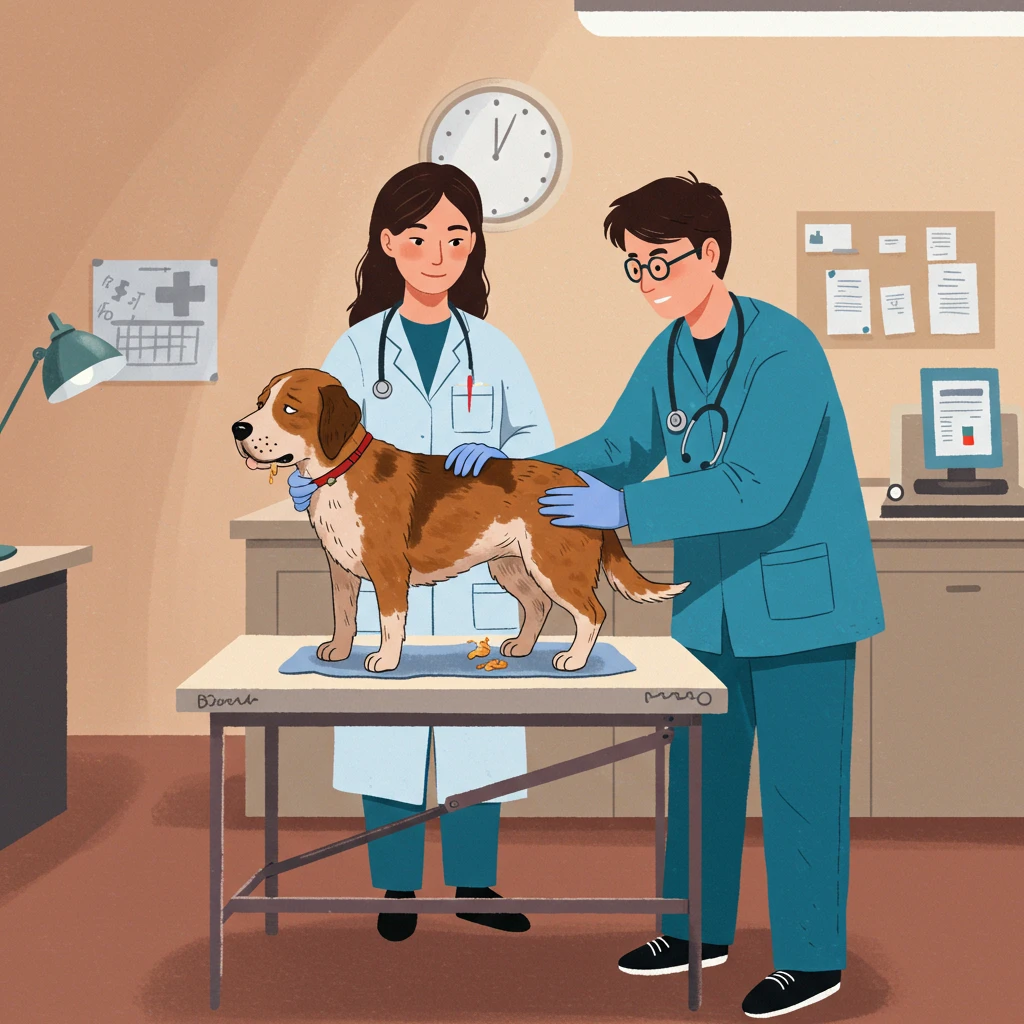Hip dysplasia is a common orthopedic disease in dogs, characterized by the abnormal development of the hip joint. This can lead to instability, early-onset arthritis, and chronic pain. While certain breeds are more predisposed, all dogs can be affected. This article aims to provide an in-depth understanding of this condition, including its causes, symptoms, diagnosis, treatment, and prevention tips.
What is Hip Dysplasia?
Hip dysplasia is a malformation of the coxofemoral joint, where the head of the femur does not fit correctly into the acetabulum of the pelvic bone. This imbalance can be caused by genetic, environmental, or nutritional factors. Young, rapidly growing dogs, particularly those of large breeds, are most at risk.
Causes
The causes of hip dysplasia can be categorized into three groups:
- Genetic: Certain breeds, such as the Labrador Retriever, German Shepherd, and Golden Retriever, are more likely to develop this condition due to genetic predispositions.
- Environmental: Factors such as obesity, excessive or inadequate exercise, and rapid growth can exacerbate dysplasia.
- Nutritional: An inappropriate diet during growth can also contribute to the development of this disease.
Symptoms of Hip Dysplasia
Symptoms of hip dysplasia can vary from dog to dog, but several common signs include:
- Lameness: Generally more pronounced after exercise.
- Difficulty getting up: Dogs may struggle to stand after lying down.
- Behavioral changes: Less activity, refusal to play or climb.
- Pain during manipulation: Sensitivity in the hip area during physical examination.
Diagnosis of Hip Dysplasia
The diagnosis of hip dysplasia relies on a combination of physical examination, medical history, and medical imaging.
Physical Examination
A veterinarian will perform a comprehensive physical examination, assessing hip mobility and checking for signs of pain.
X-rays
X-rays are essential to confirm the diagnosis. They allow visualization of the joint structure and evaluation of the degree of dysplasia. Veterinarians use scoring systems like the OFA (Orthopedic Foundation for Animals) system to classify the severity of dysplasia.
Additional Evaluations
In some cases, additional examinations like ultrasound or computed tomography (CT) may be necessary to assess the condition of the soft tissues around the joint.
Treatment of Hip Dysplasia
The treatment for hip dysplasia depends on the severity of the condition and the dog’s age. Options include:
Conservative Management
For mild to moderate cases, conservative management may be recommended:
- Weight control: Maintaining a healthy weight to reduce pressure on the joints.
- Moderate exercise: Encouraging low-impact activities like walking or swimming.
- Anti-inflammatory medications: To relieve pain and inflammation.
Surgery
In more severe cases, surgery may be necessary. Surgical options include:
- Femoral Head Ostectomy (FHO): Removal of the femoral head to relieve pain.
- Total Hip Replacement (THR): Complete replacement of the hip joint.
- Pelvic Osteotomy: Realignment of the acetabulum to improve stability.
Concrete Examples and Use Cases
Case 1: An 18-month-old Labrador Retriever
An 18-month-old Labrador Retriever presented with signs of lameness. After a physical examination and X-rays, he was diagnosed with moderate hip dysplasia. The veterinarian recommended conservative management, including a controlled diet and a moderate exercise routine. After six months, the dog showed significant improvements and was able to resume normal activities.
Case 2: A 4-year-old German Shepherd
A 4-year-old German Shepherd developed severe arthritis due to untreated hip dysplasia. After a thorough evaluation, a femoral head ostectomy was performed. The dog underwent post-operative rehabilitation and was able to regain a satisfactory quality of life without pain.
Key Points and Best Practices
- Prevention: Choose dogs from responsible breeders who perform dysplasia tests on the parents.
- Regular follow-up: Regular veterinary check-ups can help detect problems early.
- Weight management: A healthy weight is crucial to minimize pressure on the joints.
- Appropriate exercise: Avoid excessive exertion during growth and opt for low-impact activities.
Conclusion
Hip dysplasia in dogs is a serious condition that requires particular attention from dog owners. While it can be devastating, early diagnosis and appropriate treatment can significantly improve the quality of life for affected dogs. By being proactive in prevention and working closely with a veterinarian, owners can help ensure the health and well-being of their four-legged companions.
Do you have any specific concerns about hip dysplasia, perhaps regarding a particular breed, or are you looking for advice on prevention?







